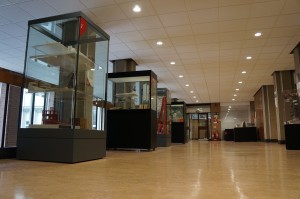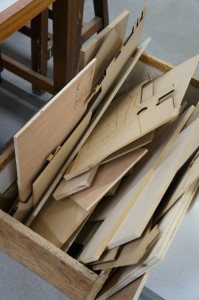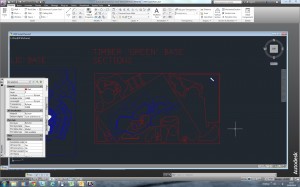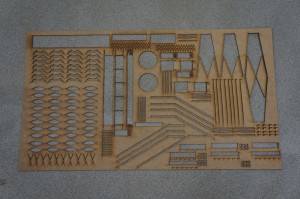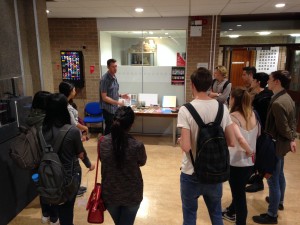Mirko Avalos Henriquez, A professional Modelmaker working in Berlin visited our exhibition recently and wrote this review in response.
The B.15:45 Architectural Modelmaking Exhibition at the Manchester school of Architecture offers a glimpse of the types of models used in the design and development of architectural ideas and concepts. The layout of the exhibition takes you on a journey through the various uses a model affords, from initial exploration of shapes, forms, materials and textures to refined and detailed representations of final design solutions.
The exhibition lets one clearly see how the process of using a model as an exploratory tool is in itself a vital component of the overall design process. Much like a sketch book of scribbles on a visual communication course or a book of fabric and colour samples on a fashion design course, the model can be used as a vehicle allowing one to visualise ideas in progress. The curators of the exhibition have organized the models in such a way that it is easy to make out the purpose of the model, through varying scales, materials, level of detail and colour. Technological advances in the production of a model or its component parts is also on show here with clear advantages and disadvantages in using new technologies and media evident in the quality of finish of a model.
We get to see structural details rendered large as well as whole city districts in a scale of 1:1000, suggestions for fantastical underwater prisons and futuristic 3D printing factories where whole buildings can be quickly produced. There are projects that are explained through a highly detailed series of models alongside more abstract explorations in shape and colour. From wood to copper, 3D printed parts to moulded plaster, the models on show cover a range of fascinating materials, production techniques and level of detail.
The art of model making and its use as a vital tool in the design process is presented in detail through lovingly preserved and at times repaired examples of models. Scott and Jim have done a fantastic job of making it easy to navigate this fundamental but often overlooked component to the study of architecture. The B.15:45 Architectural Modelmaking Exhibition is a must-see not only for those interested in architecture but also for those curious to know what goes into the exploration and development of a design idea and how this creative principle is approached.
Mirko Avalos Henriquez, October 2014
You can find out more about Mirko’s experience in our profile post here.

